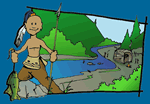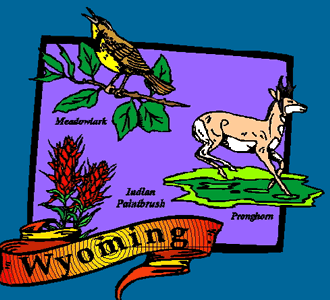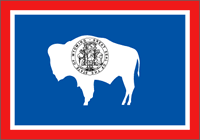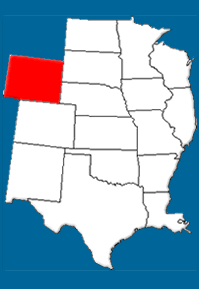 First Inhabitants:
People were living in the area we now call Wyoming more than 12,000 years ago. These people were probably part of the Clovis culture. In the next two to four thousand years, there is evidence of other cultures living and moving through this area including people who hunted big game, including animals that no longer exist, like the wooly mammoth.
One site that offers us more questions than answers about the early inhabitants of Wyoming is the Medicine Wheel, near Lovell. The Wheel, actually an arrangement of white stones forming a 70-foot diameter wheel with spokes, has been dated by archaeologists as being about 7,000 years old. Scientists believe it may have been built as an astronomical observatory, or to mark the equinox, but no one knows for sure who built it or why. However, the Crow Indians, as well as other Plains Indian tribes, believe the wheel is a sacred religious site that was constructed by their ancestors "before the light came, by people who had no iron." Today, the site is being studied, but steps have been taken to respect the Native Americans' access to the site for religious rituals.
Another prehistoric site that shows evidence of Wyoming's earliest residents is the remains of stone quarries near the town of Lusk. These quarries, called the "Spanish Diggings" show how people mined quartzite, jasper and agate for use in making tools. We know people made and traded these items, because artifacts made of Wyoming minerals have been found as far away as the Ohio and Mississippi River Valleys.
By the time white settlers and explorers arrived in Wyoming, several nomadic tribes, known collectively as the Plains Indians, were living in the areas. These tribes included the Arapaho, Arikara, Bannock, Blackfeet, Cheyenne, Crow, Gros Ventre, Kiowa, Nez Perce, Sheep Eater, Sioux, Shoshone and Ute tribes. One Indian reservation remains in Wyoming today. It is home to over 5,000 Shoshone and Arapaho Indians. |









